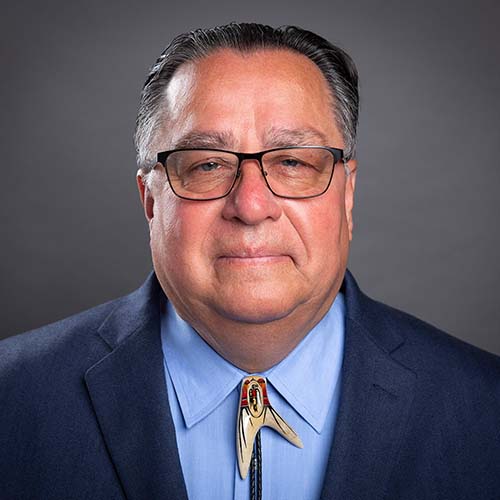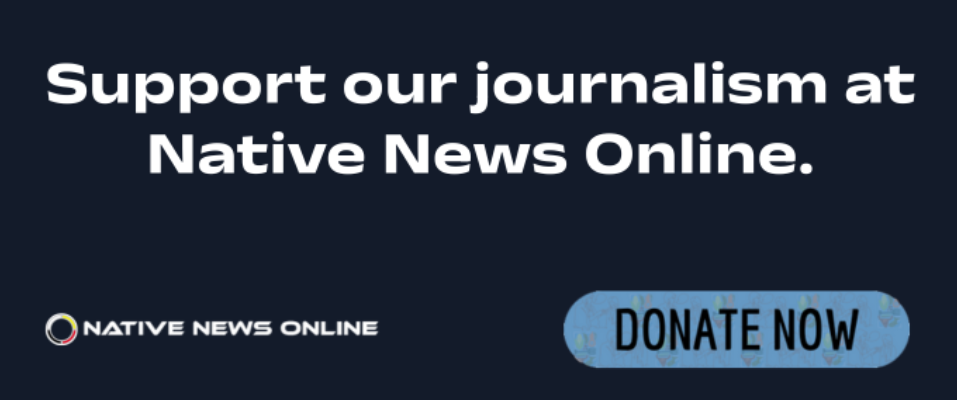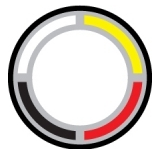Three Native women—a president, a professor, and a student—are sharing their personal journeys in higher education in a new book that highlights the experiences of Native women finding place and purpose in academic spaces.

Their chapter appears in Indigenous Voices of Girls and Women in Educational Spaces: Celebrating Presence, edited by Stephanie Masta and published by Routledge Press.
The contributors include Cheryl Crazy Bull (Sicangu Lakota), president and CEO of the American Indian College Fund and former president of Northwest Indian College, who also served in multiple roles at Sinte Gleska University; Erin Griffin (Sisseton Wahpeton Dakota), assistant professor at South Dakota State University, a former Sisseton Wahpeton College faculty member and director of Dakota Studies, and a lifelong learner and teacher of the Dakota language; and Natasha Goldtooth (Diné), a student at Diné College and an American Indian College Fund Indigenous Visionary Fellow.
Together, the women explore how Native women’s roles and experiences strengthen the tribally controlled college movement. Their work centers on kinship, place, and the relationship to the land while examining how ancestral teachings, storytelling, and naming restoration revitalize Native women’s leadership and presence in education.
The book, part of a Routledge series on Indigenous and decolonizing studies, combines personal storytelling with social justice education.
Crazy Bull said she is proud to see the collaboration come to life.
“I am proud of Erin and Natasha for sharing their deeply personal experiences with their tribal colleges,” she said. “As community- and family-based institutions, TCUs provide a sanctuary for students to fully experience themselves, to learn, and to build their knowledge. We are appreciative of this opportunity to share those experiences more broadly through this chapter.”
Griffin said the work reflects how Native women lead through love and service.
“The women in our communities often find themselves in leadership roles, not out of pursuit of title or status, but because we love our families and our people,” Griffin said. “The opportunity for Native women to share their stories is key to developing communities that support women and the hard work they do—always with a vision for a healthy future built from Dakota wowicohan, our ways of life.”
Goldtooth, the youngest contributor, said she hopes readers see the power of mentorship and student leadership.
“Ahe’hee (thank you) to my mentors Cheryl Crazy Bull and Erin Griffin for guiding and helping bring our stories to life and to light,” Goldtooth said. “With their support, my story gives a small glimpse of how it’s important not to overlook students like me. The leadership role found us—not that we wanted it—but our character and commitments reflected our light to those who believed in us then and now.”
Copies of Indigenous Voices of Girls and Women in Educational Spaces: Celebrating Presence are available through Routledge Press.
More Stories Like This
Hanging a Red Dress for Christmas: MMIP, Native Higher Education, and Hope for a Better New YearNative Students Can Win $5,000 Scholarship, International Distribution in Pendleton Design Contest
American Indian College Fund Raises Alarm Over Plan to Shift Native Programs Away From the Dept. of Education
MacKenzie Scott Foundation Gives $5 Million Contribution to Little Priest Tribal College
Tribal Leaders Push Back on Dismantling of U.S. Department of Education
Help us defend tribal sovereignty.
At Native News Online, our mission is rooted in telling the stories that strengthen sovereignty and uplift Indigenous voices — not just at year’s end, but every single day.
Because of your generosity last year, we were able to keep our reporters on the ground in tribal communities, at national gatherings and in the halls of Congress — covering the issues that matter most to Indian Country: sovereignty, culture, education, health and economic opportunity.
That support sustained us through a tough year in 2025. Now, as we look to the year ahead, we need your help right now to ensure warrior journalism remains strong — reporting that defends tribal sovereignty, amplifies Native truth, and holds power accountable.
 The stakes couldn't be higher. Your support keeps Native voices heard, Native stories told and Native sovereignty defended.
The stakes couldn't be higher. Your support keeps Native voices heard, Native stories told and Native sovereignty defended.
Stand with Warrior Journalism today.
Levi Rickert (Potawatomi), Editor & Publisher


